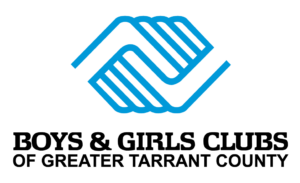 Nonprofits frequently need more resources to maximize their impact. This requires a keen focus on program evaluation and process improvement—a challenge the Boys & Girls Clubs of Greater Tarrant County embraced head-on with their Comin’ Up Gang Intervention Program.
Nonprofits frequently need more resources to maximize their impact. This requires a keen focus on program evaluation and process improvement—a challenge the Boys & Girls Clubs of Greater Tarrant County embraced head-on with their Comin’ Up Gang Intervention Program.
A Shift in Service Delivery:
In late 2023, the Comin’ Up program wanted to engage in a robust continuous improvement initiative. This initiative included creating clear processes and procedures for program implementation, evaluating shifts in program focus over time, and investigating the effectiveness of program services.
Process Improvement for Greater Efficiency:
Beyond this change, Comin’ Up embarked on a comprehensive process improvement project to enhance their program’s efficiency and effectiveness. This involved:
- Mapping existing processes: Identifying pain points and areas for streamlining.
- Developing new workflows: Creating optimized systems to reduce workload and improve service delivery.
- Staff training: Equipping the team with the knowledge and skills to implement the new processes effectively.
Measuring Outcomes Through Evaluation:
To ensure program services are truly beneficial, a two-part evaluation was completed. This evaluation sought to understand:
- Program Outcomes: Looking for program successes and areas of growth.
- Experiences of staff and youth: Gathering feedback from those directly impacted to gain valuable insights.
Why This Matters:
This commitment to process improvement and evaluation is crucial for several reasons:
- Enhanced program effectiveness: Streamlined processes and targeted services improve at-risk youth outcomes.
- Resource optimization: Increased efficiency allows nonprofits to do more with less, maximizing the impact of every dollar.
- Data-driven decision-making: Evaluation provides valuable insights for ongoing program improvement and future planning.
The Power of Systems Thinking:
By embracing a systems thinking approach, the Boys & Girls Clubs of Greater Tarrant County are demonstrating their dedication to continuous improvement. This commitment strengthens their gang intervention efforts and serves as a model for other nonprofits seeking to enhance their impact.
What are the possible benefits of systems thinking and program evaluation for youth development programming?
Youth Empowerment and Employment:
- Job Readiness and Employment Opportunities: The program’s focus on job placement and skills training equips participants with the tools to secure employment. This reduces reliance on illicit activities for income and fosters financial independence.
- Increased Educational Attainment: Some participants may also be inspired to continue their education, further enhancing their long-term career prospects and reducing the cycle of poverty.
Self-Sufficiency Support: The program’s case management is a comprehensive approach to coordinating quality services and resources to help clients address their needs, reach their goals, and become self-sufficient. The purpose is to guide and assist clients in making sound decisions that will lead to successful outcomes and life changes.
Potential Economic Growth:
- Local Economic Development: As participants find stable jobs, they contribute to the local economy through spending, taxes, and supporting local businesses.
- Reduction in Public Assistance Dependency: The financial independence gained by participants may lead to a decreased need for public assistance programs, thereby reducing the strain on local and state government resources.
Increased Trust in Institutions:
- Community Collaboration: Programs like these build trust between community members and local institutions (nonprofits, local government, law enforcement), which can improve collaboration in other community efforts, such as education and health initiatives.
Role Models and Mentorship:
- Youth as Community Leaders: If participants in the gang intervention program succeed, they may become role models for younger generations. Potential new role models can create a cycle of mentorship in which former at-risk youth guide others toward better life choices.
- Community Engagement: Participants who have benefited from the program may give back to their community through volunteer work or by leading community initiatives focusing on gang prevention and youth empowerment.
Conclusion
The Boys & Girls Clubs of Greater Tarrant County’s Comin’ Up Gang Intervention Program exemplifies the transformative power of process improvement and evaluation in youth development. The program has enhanced effectiveness, optimized resource utilization, and fostered data-driven decision-making by embracing a systems-thinking approach. The Comin’ Up program demonstrates a dedication to continuous improvement by investing in process improvement and evaluation. It serves as a model for other nonprofits seeking to maximize their impact on at-risk youth.
Key Takeaways:
- Process improvement and evaluation are essential for maximizing the impact of youth development programs.
- A systems thinking approach enhances program effectiveness, resource optimization, and data-driven decision-making.
- Effective gang intervention programs can yield a range of benefits, including youth empowerment, economic growth, increased trust in institutions, and the development of community leaders.
- The Comin’ Up program is an inspiring example of how nonprofits can achieve meaningful and sustainable change in the lives of at-risk youth.





